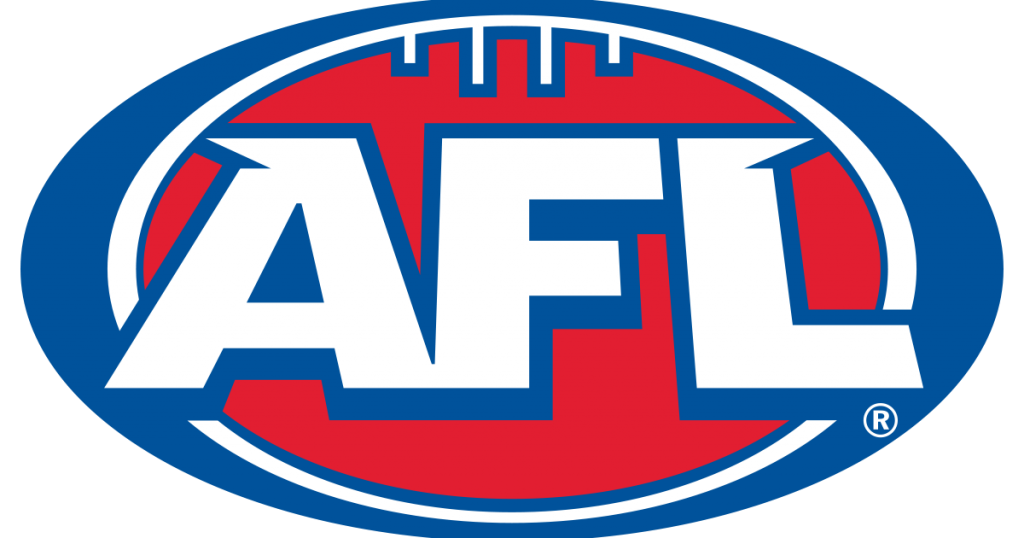
Australia is a country known for it’s beautiful beaches, amazing scenery and being home to some of the world’s deadliest animals. If there is one thing that’s undeniable about the Australian people it is that they are sports crazy; cricket, football and rugby all being a popular choice for most Aussie sports enthusiasts. There is one sport that is undeniably more popular is Australia, that being their own sport, Australian rules football (AFL). A fairly unknown sport around the world AFL (Australian Football League) was founded on the 2nd of October 1896, in Victoria, Australia.

In the beginning:
In 1857 Tom Wills, one of the founders of Australian Football, returned to Australia after schooling in England where he was football captain of Rugby School and a brilliant cricketer. Initially he advocated the winter game of football as a way of keeping cricketers fit during off-season.
The new game of Australian rules was devised by Wills, his cousin H.C.A. Harrison, W.J. Hammersley and J.B. Thompson. The Melbourne Football Club was formed on August 7, 1858 – the year of the code’s first recorded match between Scotch College and Melbourne Grammar School.
The game quickly blossomed. The Geelong Football Club was formed in 1859 and in 1866 an updated set of rules was put in place and competition started.
The Victorian Football League was established in 1896 and the following year the League’s first games were played among the foundation clubs – Carlton, Collingwood, Essendon, Fitzroy, Geelong, Melbourne, St Kilda and South Melbourne.
In 1908, Richmond and University joined the competition. But after the 1914 season, University left the League. In 1925, Footscray (now the Western Bulldogs), Hawthorn and North Melbourne joined the VFL.
This line-up of 12 clubs would remain unchanged until 1987 when the competition expanded to include the West Coast Eagles and the Brisbane Bears. By 1997, the competition would be comprised of 16 clubs after Adelaide (in 1991), Fremantle (in 1995), and Port Adelaide (in 1997) joined the now Australian Football League and foundation club Fitzroy merged with the Brisbane Bears to form the Brisbane Lions (after the 1996 season). In 2011 the Gold Coast Suns joined the competition, followed by the Greater Western Sydney Giants, creating the 18-team national competition we see today.
Pitch size:
The standard Australian rules Football ground is a grassed oval measuring between 135–185 metres in length and 110–155 metres in width.

How many players per team?
Each Australian rules team will consist of 18 players of which are all assigned to different positions. These players are allowed to move freely on the pitch. Each team may also have up to three substitutes which are ‘rolling’ meaning they can come on and off as many times as they want. Once a starting player gets substituted these players then become rolling. The positions are broken down into Full Forward, Half Forward, Centre Line, Half Back and Full Back.

How long Is a game?
In Australian rules footie there is 4x 20mins quarters in which the clock stops when play stops and time can be added if needed, at the end.

Umpires:
There are 7 umpires for Aussie Rules in total. The three main umpires are known as field umpires and they basically oversee all the decisions on field such as time keeping, infringements and enforcing the rules. The two line judges are there to see if the ball goes out of play or not – these judges can also intervene where field umpires have missed a decision. The last two umpires are goal umpires and its their job to signal if a goal has been scored successfully or not.
The aim of the game:
The aim of the game is to kick the football between a series of 4 goal posts. Depending on which posts the ball goes between will depend on how many points you score. The ball can be passed around between team mates in a series of fashions and the winning team will be the team with the highest number of points at the end of the game.
Ways of scoring:
If the ball is kicked between the two goal posts (middle posts) then 6 points are awarded and is referred to as a goal. If the ball goes between a goal post and one of the behind posts (point) then 1 point is awarded and is referred to as a behind. 1 point is also awarded if the ball is carried or forced over the scoring line by the attacking team.
Rules of Australian Rules Football:
Umpires signal for all decisions and their call is final.
The game starts with ruck. This is where the umpire throws the ball into the air and one player from each team will try and tap the ball to their team. After a goal has been scored the game will be restarted with the same way as at the beginning of the game.
The only way you can pass the ball is to hand ball. For this to happen the ball must be placed in the palm of the hand and then the ball struck with the butt of the other hand clenched into a fist. You cannot throw or slap the ball to perform a successful pass.
A player can ‘mark’ the ball when they receive it. This can happen one of three ways; the player catches the ball without the ball bouncing, the player catches the ball after it has travelled over 10 metres or the player catches the ball before it’s been touched in the air. Once marked the player cannot then be tackled. If a tackle occurs or an opponent steps over the mark then a foul will be called and the team with the ball will advance 15 metres down the field.
Players can tackle opponents to try and win back the ball. A player can only be tackled from shoulder height downwards.
If a player is tackled and refuses to let go of the ball then holding the ball will be called by the umpire and possession will be turned over.
Players are permitted to block their opposition by shepherding players away from the ball. This can only be done within 5 metres of the ball.
Players are omitted from pushing their opponents in the back either whilst they are running or whilst in a tackle.

How the scoring looks:
Example of a score…
St Kilda 1 12 18 vs Richmond 3 2 20
The first number is the amount of six points scored.
The second number is the amount of one points scored.
The third is the total score.
So St Kilda scored 1 x 6 points and 12 x 1 point with a total score of 18.
Teams/Stadiums

Adelaide Crows
Adelaide Oval
Capacity – 53,583
Coach – Matthew Nicks


Brisbane Lions
The Gabba
Capacity – 42,000
Coach – Chris Fagan


Carlton
Marvel Stadium
Capacity – 56,347
Coach – David Teague


Collingwood
Melbourne Cricket Ground
Capacity – 100,024
Coach – Nathan Buckley


Essendon
Marvel Stadium
Capacity – 56,347
Coach – John Worsfold

Fremantle Dockers
The Optus Stadium
Capacity – 60,000
Coach – Justin Longmuir


Geelong Cats
GMHBA Stadium
Capacity – 36,000
Coach – Chris Scott


Gold Coast Sun’s
Metricon Stadium
Capacity – 25,000
Coach – Stewart Dew


GWS Giants
Sydney Showground Stadium
Capacity – 25,000
Coach – Leon Cameron


Hawthorne
Melbourne Cricket Ground
Capacity – 100,024
Coach – Alastair Clarkson

Melbourne
Melbourne Cricket Ground
Capacity – 100,024
Coach – Simon Goodwin

North Melbourne
Marvel Stadium
Capacity – 56,347
Coach – Ryhce Shaw

Port Adelaide
Adelaide Oval
Capacity – 53,583
Coach – Ken Hinkley

Richmond
Melbourne Cricket Ground
Capacity – 100,024
Coach – Damien Hardwick

St Kilda
Marvel Stadium
Capacity – 56,347
Coach – Brett Ratten

Sydney Swans
Sydney Showground
Capacity – 25,000
Coach – John Longmire

West Coast Eagles
The Optus Stadium
Capacity – 60,000
Coach – Adam Simpson

Western Bulldogs
Marvel Stadium
Capacity – 56,347
Coach – Luke Beveridge

I shall be covering the AFL when the season starts so watch this space.
For more like this, visit our dedicated AFL page here. Meanwhile, follow us on Facebook for more opinions and analysis right to your timeline.
